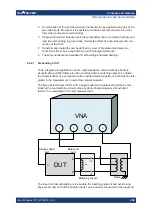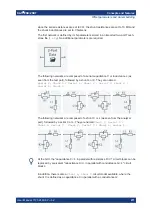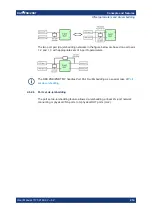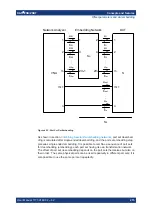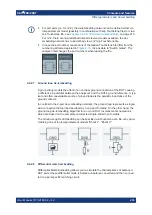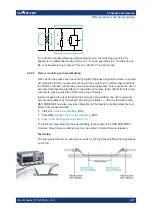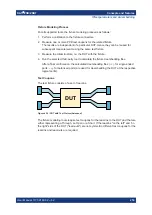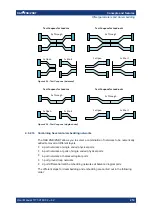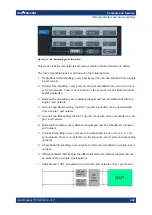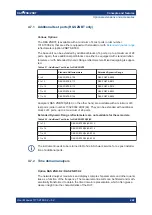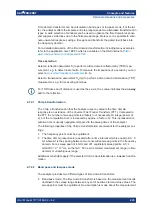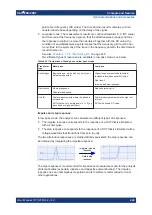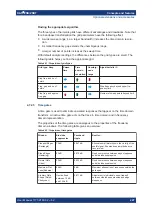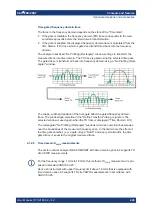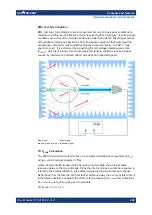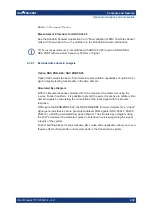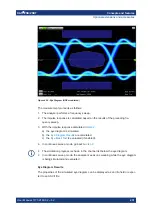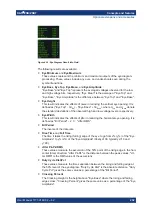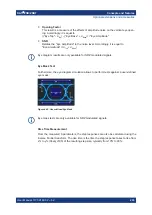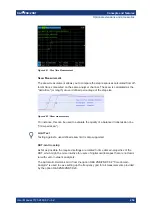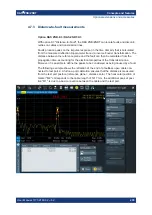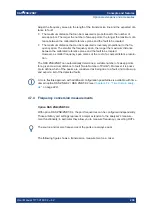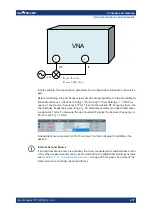
Concepts and features
R&S
®
ZNB/ZNBT
223
User Manual 1173.9163.02 ─ 62
Time domain transforms can be calculated in band pass or low pass mode. For the lat-
ter, the analyzer offers the impulse and step response as two alternative transformation
types. A wide selection of windows can be used to optimize the time domain response
and suppress side lobes due to the finite sweep range. Moreover, it is possible to elimi-
nate unwanted responses using a time gate and transform the gated result back into
the frequency domain.
For a detailed discussion of the time domain transformation including many examples,
refer to the application note 1EP83 which is available on the R&S internet at
www.rohde-schwarz.com/appnotes/1EP83
Trace selection
Select a reflection parameter S
ii
to perform a time domain reflectometry (TDR) mea-
surement, e.g. to detect cable faults. To measure the impedance of a network, you can
select a
ii
.
Select a transmission parameters S
ij
(i≠j) to perform a time domain transmission (TDT)
measurement, e.g. for measuring antennas.
For TDR traces and if distance is used as the x axis, the x value indicates the
one-way
path to the reflection.
4.7.2.1
Chirp z-transformation
The Chirp z-transformation that the analyzer uses to compute the time domain
response is an extension of the (inverse) Fast Fourier Transform (FFT). Compared to
the FFT, the number of sweep points is arbitrary (not necessarily an integer power of
2), but the computation time is increased by approx. a factor of 2. This increased com-
putation time is usually negligible compared to the sweep times of the analyzer.
The following properties of the Chirp z-transformation are relevant for the analyzer set-
tings:
●
The frequency points must be equidistant.
●
The time domain response is repeated after a time interval which is equal to Δt = 1/
Δf, where Δf is the spacing between two consecutive sweep points in the frequency
domain. For a sweep span of 4 GHz and 201 equidistant sweep points, Δf = 4
GHz/200 = 2 * 10
7
Hz, so that Δt = 50 ns. Δt is termed measurement range (in time
domain) or unambiguous range.
Additional constraints apply if the selected Chirp z-transformation is a lowpass transfor-
mation.
4.7.2.2
Band pass and low pass mode
The analyzer provides two different types of time domain transforms:
●
Band pass mode: The time domain transform is based on the measurement results
obtained in the sweep range between any set of positive start and stop values. The
sweep points must be equidistant. No assumption is made about the measurement
Optional extensions and accessories

